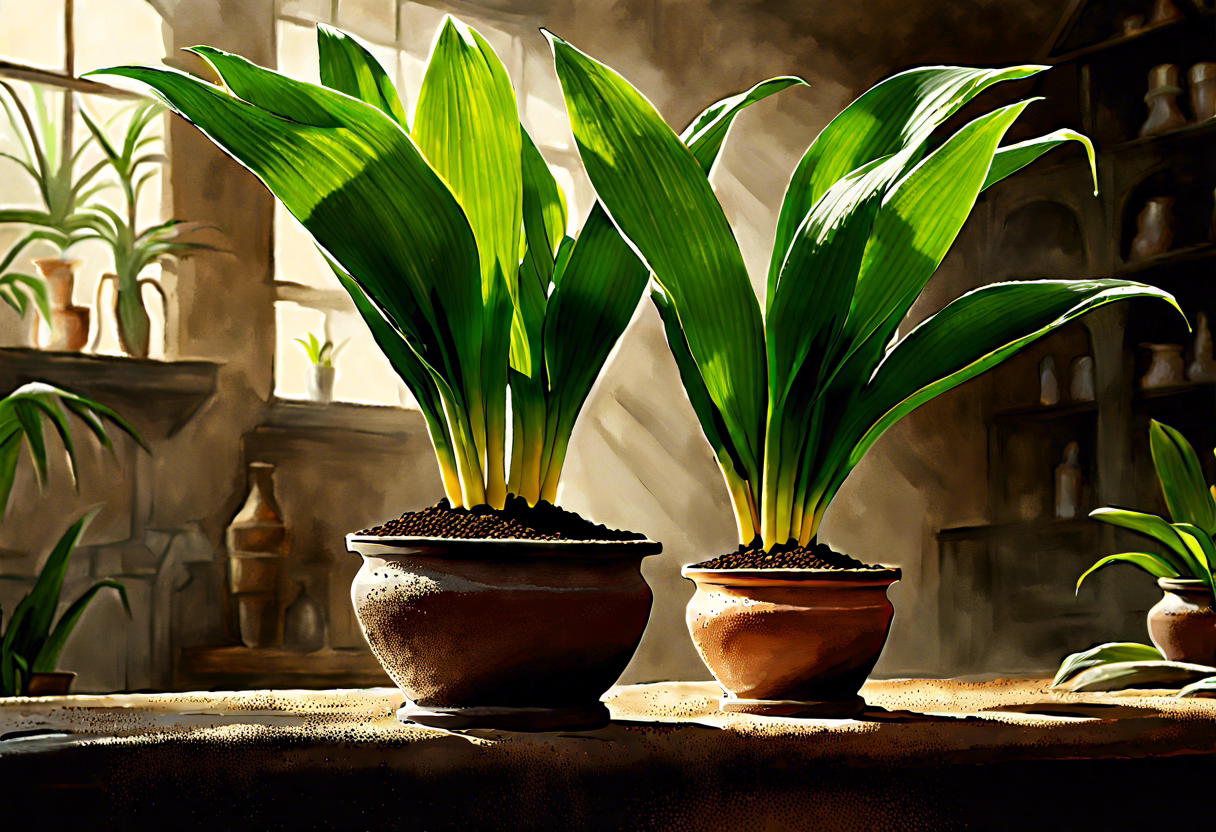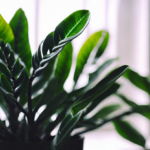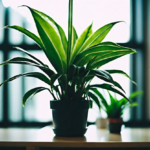Benefits of Using the Best Soil or Potting Mix for Cast Iron Plant (Aspidistra elatior)
Aspidistra elatior, commonly known as the Cast Iron Plant, is a resilient and hardy plant that can thrive in various conditions. However, providing it with the best soil or potting mix can greatly enhance its growth and overall health. Here are some key benefits of using the right soil or potting mix for your Cast Iron Plant:
Promotes Optimal Drainage
The ideal soil or potting mix for Cast Iron Plants should have excellent drainage properties. This is crucial because overwatering is one of the most common causes of plant decline. A well-draining mix allows excess water to flow away from the plant’s roots, preventing rot and fungal diseases.
Retains Moisture
While good drainage is essential, it’s equally important for the soil or potting mix to retain some moisture. Cast Iron Plants prefer slightly moist soil conditions, as prolonged dryness can cause leaf curling and browning. A mix that retains moisture will help ensure consistent hydration for the plant.
Provides Adequate Aeration
The best soil or potting mix for Cast Iron Plants should also offer sufficient aeration to the roots. Gently porous soil allows air to reach the root system, facilitating healthy growth and nutrient absorption. Avoid compacted or heavy soils, as they can suffocate the roots and hinder overall plant development.
Supplies Essential Nutrients
Using a high-quality potting mix that is enriched with organic matter and nutrients is crucial for the optimal growth of Cast Iron Plants. These plants benefit from a balanced supply of macronutrients like nitrogen, phosphorus, and potassium, as well as essential micronutrients. A nutrient-rich mix will support robust foliage and promote overall plant vigor.
Reduces the Risk of Pest and Disease Problems
Healthy, well-drained soil or potting mix promotes stronger plant roots, and strong roots are better equipped to fend off pests and diseases. By providing the right soil conditions, you can help your Cast Iron Plant develop a natural resistance to common issues, reducing the risk of infestations or infections.
Enhances Overall Aesthetic Appeal
Aside from the practical benefits, using the best soil or potting mix can also enhance the visual appeal of your Cast Iron Plant. Healthy plants grown in nutrient-rich soil tend to display vibrant foliage, with lush, deep green leaves that add beauty to any indoor or outdoor space.
Choosing the best soil or potting mix for your Cast Iron Plant is essential for its overall health and growth. A mix that promotes proper drainage, moisture retention, aeration, and nutrient supply will help your plant thrive while reducing the risk of pest and disease problems. Enjoy the benefits of a beautiful, lush Cast Iron Plant by providing it with the ideal soil conditions it needs.
Characteristics and requirements of the ideal soil or potting mix for Cast Iron Plant
When it comes to growing a Cast Iron Plant (Aspidistra elatior), having the right soil or potting mix is crucial for its overall health and growth. This resilient foliage plant requires a specific type of soil that provides the ideal conditions for its root development and nutrient uptake. Here are the characteristics and requirements of the best soil or potting mix for Cast Iron Plants:
1. Well-Draining:
The ideal soil for Cast Iron Plants should be well-draining to prevent waterlogging, which can lead to root rot. It is recommended to use a potting mix that contains coarse materials like perlite or sand to improve drainage and promote aeration.
2. Moisture Retentive:
Although the soil should be well-draining, it is also important that it retains some moisture for the Cast Iron Plant’s root system. The potting mix should be able to hold onto water long enough to keep the plant hydrated between watering sessions. organic matter like peat moss or compost into the soil can help improve moisture retention.
3. Nutrient-Rich:
Cast Iron Plants benefit from a nutrient-rich soil that provides essential elements for their growth. Look for a potting mix that contains organic matter or use a slow-release fertilizer to ensure a steady supply of nutrients. Avoid using soil mixes that are too rich in nutrients, as this can lead to fertilizer burn or excessive leaf growth.
4. Slightly Acidic to Neutral pH:
The optimal pH range for Cast Iron Plants is slightly acidic to neutral, typically around 6.0 to 7.0. This pH range allows the plant to efficiently absorb nutrients from the soil. You can check the pH of your potting mix using a soil testing kit and adjust it if necessary by adding amendments like lime or sulfur.
5. Light and Well-Textured:
Cast Iron Plants prefer soil that is light and well-textured, allowing their roots to easily penetrate and establish. Avoid using heavy clay soil, as it can become compacted and impede root growth. A loose and crumbly potting mix that includes ingredients like vermiculite or perlite can provide the desired texture.
The best soil or potting mix for Cast Iron Plants should be well-draining, moisture retentive, nutrient-rich, slightly acidic to neutral in pH, and light with a well-textured structure. By ensuring these characteristics and meeting the plant’s requirements, you can provide your Cast Iron Plant with an optimal growing environment and promote its health and growth.
Choosing the Best Soil or Potting Mix for Cast Iron Plant (Aspidistra elatior)
When it comes to the well-being and thriving of your Cast Iron Plant (Aspidistra elatior), choosing the right soil or potting mix is crucial. This evergreen perennial plant is known for its ability to thrive in low-light conditions and tolerate neglect, making it a popular choice for indoor gardens. To ensure optimal growth and health, here are some tips on selecting the best soil or potting mix for your Cast Iron Plant.
1. Well-Draining Soil: The ideal soil for Cast Iron Plant should be well-draining to prevent root rot. This plant prefers slightly moist soil but can suffer if left in standing water. Look for a potting mix that contains a mixture of peat moss, perlite, and sand. These ingredients will improve drainage and allow excess water to flow out of the container.
2. Organic Matter: organic matter into the soil is beneficial for the nutrient content and moisture retention of the potting mix. Adding compost or well-rotted manure can enrich the soil with essential nutrients and improve its water-holding capacity. This can be particularly helpful during hot, dry periods when the Cast Iron Plant may require more moisture.
3. pH Level: Cast Iron Plant thrives in slightly acidic to neutral soil conditions. Aim for a pH level between 6.0 and 7.0. You can test the pH level of your potting mix using a soil testing kit, and if necessary, adjust it by adding amendments such as sphagnum peat moss or agricultural lime.
4. Looseness and Aeration: Cast Iron Plant’s roots appreciate loose and well-aerated soil. This allows for better air circulation around the roots and reduces the risk of root rot. Avoid using heavy, compacted soils that can retain excess moisture. Instead, choose a potting mix that is light, fluffy, and provides good aeration.
5. Avoid Excessive Fertilization: Cast Iron Plant is known for its ability to thrive without much fertilizer. In fact, excessive fertilization can result in weak growth and leaf burning. Choose a potting mix that is low in fertility or use a slow-release fertilizer sparingly. A balanced, diluted liquid fertilizer can also be used occasionally during the growing season.
Remember to repot your Cast Iron Plant every few years to refresh the soil and prevent root-bound conditions. Monitor the moisture level regularly, ensuring that the potting mix is slightly moist but not waterlogged. By providing the best soil or potting mix for your Cast Iron Plant, you can promote its health, vigor, and overall beauty for many years to come.
The Perfect Homemade Potting Mix for Cast Iron Plant
Growing healthy and thriving Cast Iron Plants (Aspidistra elatior) requires the use of the right soil or potting mix. While there are various options available in the market, creating your own homemade potting mix can be a cost-effective and beneficial alternative. By incorporating the ideal ingredients, you can provide the necessary nutrients and environment for the Cast Iron Plant to flourish. In this guide, we will help you create the perfect homemade potting mix for your Cast Iron Plants.
Benefits of a Homemade Potting Mix
Using a homemade potting mix offers several advantages over pre-packaged options. Firstly, it allows you to customize the blend according to the specific needs of your Cast Iron Plants. Secondly, homemade potting mixes are generally more affordable and can be tailored to suit your budget. creating your own potting mix ensures the quality and freshness of the ingredients, resulting in healthier plants.
Ingredients for the Ideal Potting Mix
When creating a homemade potting mix for Cast Iron Plants, aim to achieve a well-draining yet moisture-retaining blend. The following ingredients are essential for a successful mix:
- Potting Soil: Start with a high-quality potting soil as the base of your mix. Look for a mixture that is well-draining and does not contain excessive amounts of organic matter, which can lead to waterlogged soil.
- Perlite or Vermiculite: Adding perlite or vermiculite helps improve the drainage and aeration of the mix, preventing it from becoming compacted.
- Peat Moss: Peat moss enhances water retention in the potting mix, keeping the soil moist but not overly saturated.
- Compost: compost adds organic matter and essential nutrients to nourish the Cast Iron Plants. Use well-rotted compost to avoid any potential issues.
- Sand: Including coarse sand in your mix aids in drainage and prevents the soil from becoming too dense. Opt for horticultural sand rather than construction sand, as it is more suitable for gardening purposes.
Preparing and Mixing the Ingredients
Start by combining equal parts of potting soil, perlite or vermiculite, and peat moss in a large container or wheelbarrow. Mix the ingredients thoroughly to ensure a uniform blend. Next, add a smaller amount of compost, approximately one-third to half of the volume of the other ingredients. incorporate a small portion of sand to improve the overall texture and drainage capabilities of the mix. Again, mix everything together until well incorporated.
Remember to moisten the potting mix slightly before using it. This ensures that the soil is evenly moist when planting your Cast Iron Plants. Avoid soaking the mix with water, as it may become waterlogged.
With your homemade potting mix ready, you can confidently repot your Cast Iron Plants or start new plants from cuttings. The well-balanced blend of ingredients will provide the necessary drainage, aeration, and nutrition for the plants to thrive.
By taking the time to create a homemade potting mix, you are investing in the long-term health and growth of your Cast Iron Plants. Enjoy watching them flourish in soil that has been tailored to their specific needs!
Tips for Maintaining the Health and Growth of Cast Iron Plant by Using the Right Soil or Potting Mix
Ensuring the optimal health and growth of your Cast Iron Plant (Aspidistra elatior) relies heavily on providing it with the right soil or potting mix. Here are some essential tips to help you maintain the longevity and vitality of this resilient plant:
1. Choose a well-draining soil: Cast Iron Plants thrive in well-drained soil, as they are susceptible to root rot if the soil retains too much moisture. A mixture that consists of equal parts of potting soil, peat moss, and perlite or sand provides a suitable balance for adequate water drainage.
2. Opt for a slightly acidic soil: The ideal pH level for a Cast Iron Plant ranges between 5.5 and 6.5. It is crucial to select a soil or potting mix that is slightly acidic to create an optimal environment for nutrient absorption. You can test the pH level of your soil using a simple DIY kit available at most garden centers.
3. Ensure proper aeration: materials like perlite or vermiculite into your soil mix helps improve aeration, allowing oxygen to reach the plant’s roots. This encourages healthy root growth and overall plant vigor.
4. Avoid compacted soil: Compacted soil can hinder the growth of Cast Iron Plants and limit their nutrient absorption. Regularly check the soil’s texture and loosen it if necessary by gently incorporating organic matter such as compost or well-rotted manure.
5. Provide adequate drainage: While Cast Iron Plants prefer slightly moist soil, they cannot withstand saturated conditions. Ensure that your pots or containers have drainage holes to allow excess water to escape. This prevents waterlogging and potential root damage.
6. Choose an appropriate pot size: When it comes to choosing a pot for your Cast Iron Plant, go for one that accommodates the plant’s current size and allows room for root expansion. A pot that is too large can lead to excessive moisture retention, while a small pot restricts growth.
7. Avoid overwatering: Overwatering is one of the common mistakes when caring for Cast Iron Plants. Water your plant thoroughly, allowing the excess water to drain out completely. Wait until the top inch of the soil feels slightly dry before watering again. Consistency is key in maintaining the health of these plants.
8. Fertilize sparingly: Choose a balanced, slow-release fertilizer and apply it sparingly during the growing season. Over-fertilization can lead to leaf burn and other adverse effects. Follow the manufacturer’s instructions and use fertilizers specifically formulated for indoor plants.
9. Monitor light exposure: Cast Iron Plants prefer low to moderate indirect light, making them excellent choices for indoor spaces with minimal natural light. Avoid exposing them to direct sunlight, as it can scorch their leaves. Place them in an area where they receive filtered or artificial light.
By following these tips and providing your Cast Iron Plant with the best soil or potting mix, you can enjoy the lush foliage and resilience of this beautiful plant for years to come. Remember, proper soil and ongoing care are essential for the continued health and growth of your Cast Iron Plant.
Conclusion
To ensure the optimal growth and health of your Cast Iron Plant (Aspidistra elatior), it is crucial to choose the best soil or potting mix. Throughout this article, we have explored the benefits of using the right soil or potting mix for this resilient plant, as well as its characteristics, requirements, and different types of suitable mixes.
By selecting the appropriate soil or potting mix, you provide the Cast Iron Plant with a nutrient-rich environment that promotes vigorous growth. The best mix allows for proper drainage, preventing the roots from becoming waterlogged and prone to rot. Additionally, it aids in the transportation of essential nutrients to different parts of the plant, ensuring robust and healthy foliage.
The ideal soil or potting mix for the Cast Iron Plant should be well-draining to prevent water stagnation. It should also retain moisture to support the plant during dry spells. This helps mimic the natural environment of the plant, as it grows in the forest understory where the soil is rich, well-drained, and slightly acidic. The soil mix should provide stability and support to the plant, as Cast Iron Plants are known for their tendency to grow dense foliage.
Different types of soil or potting mix are suitable for the Cast Iron Plant. For instance, a mix composed of equal parts peat moss, perlite, and sand proves to be effective in providing the necessary drainage while retaining moisture. Alternatively, a blend of potting soil, perlite, and pine bark can also offer optimal results.
For those who prefer a homemade potting mix, combining ingredients such as perlite, compost, and sphagnum peat moss in equal parts can yield a suitable mix. This blend allows for excellent drainage, aeration, and ample nutrient availability for the Cast Iron Plant.
To maintain the health and growth of your Cast Iron Plant, a few tips come in handy. Firstly, ensure that the pot or container has drainage holes to prevent waterlogging of the soil. Proper watering is essential, allowing the soil to dry partially between waterings to prevent root rot. Lightly fertilize the plant during the growing season with a balanced slow-release fertilizer to replenish nutrients in the soil and stimulate growth. place your Cast Iron Plant in an area with indirect sunlight or low light conditions, as excessive sunlight can scorch the leaves.
Choosing the best soil or potting mix for your Cast Iron Plant is essential for its overall well-being. The right mix promotes healthy growth, provides adequate drainage, and mimics the plant’s natural environment. By understanding the characteristics and requirements of the ideal soil mix, and considering different options available, you can create an environment that supports the health and lush foliage of your Cast Iron Plant (Aspidistra elatior). Implementing the tips mentioned in this article will help you maintain the beauty and vitality of this resilient plant for years to come.


